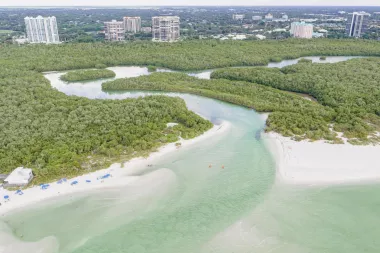Pro Tips For Fishing the Mangroves on Florida’s Paradise Coast
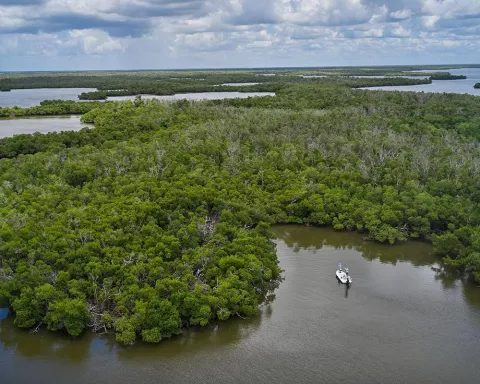
One thing Florida’s Paradise Coast has no shortage of is mangroves – the thick clusters of trees and shrubs that grow mainly in coastal salt or brackish water in an equatorial climate. These clumps of vivid green, which don’t grow very tall, are so plentiful around here that you might not even notice them.
But anglers know them well — because they represent some of the best places to fish on Florida’s Paradise Coast.
For this article, we have collected information and tips from local fishing guides on the best practices for fishing the mangroves. We’ve also included some prime fishing areas. Of course, you can hire a guide to take you out, but the information below is helpful for anyone who wants to fish our shallow inland waters, which are loaded with mangroves, in flats boats or kayaks.
Fishing the mangroves means going after the Big Three — tarpon, snook, and redfish — the most sought-after sportfish on Florida’s Paradise Coast. But you’ll also come across mangrove snapper, spotted sea trout, sheepshead, pompano and more.
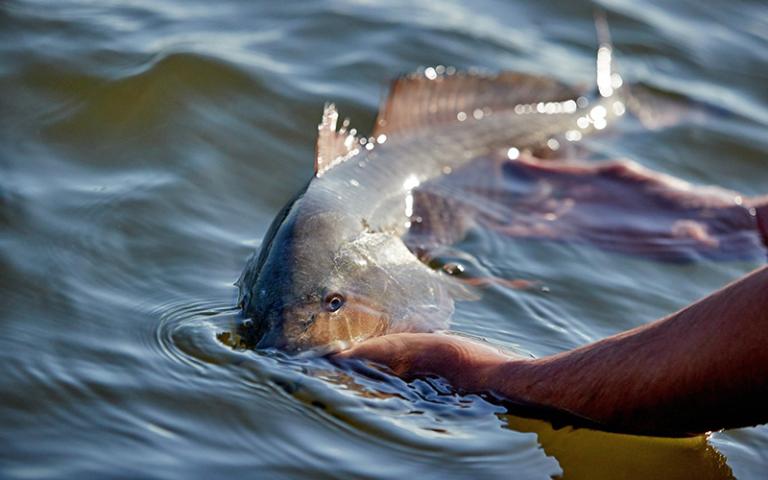
Ready to launch?
• The 90/10 rule — Ninety percent of fish are in 10 percent of the water. But that 10 percent is constantly changing. That means fishing the mangroves requires regular movement. You don’t want to remain stationary, unless, of course, you’ve found a hungry school of fish and are reeling them in.
The Three B’s — Look for birds, baits and boils. Birds go where the fish are. Busy schools of bait fish in the water are prime hunting grounds for predator sportfish. A boil is where a school of fish corrals smaller fish onto the surface and attacks them. Boils are like feeding frenzies and are often easy to spot. Following these Three B’s is a good place to start when looking for that 10 percent.
• Points and Coves — These are changes in the mangrove shoreline where sportfish congregate to look for an easy meal. The point is a place where the trees jut out, and the cove is an indentation in the treeline. When arriving at a mangrove, it’s best to first cast into these areas. Look for mangrove stands with shorelines that are erratic, with plenty of points and coves.
• The 30-foot rule (of thumb) — Many guides agree that keeping a flats boat about 30 feet from the trees is an ideal distance. You can then cast and land lures or live bait right next to the mangroves and even under their roots. But don’t get too obsessed with your boat’s distance from the mangroves – this is merely a rule of thumb. If you’re kayak fishing, you can quietly move in closer to the bushes and trees, and perhaps spot schools of fish.
• Stealth is King — Shhhh. Success in these shallow waters depends on stealth. This is especially true for close-in kayak fishing. The idea is to slip quietly into a spot undetected by the fish. Paddle quietly and drift. Enjoy the silence. If you inadvertently make a loud noise, you might as well move on.
• Lures or live bait? — There is disagreement on this, as you might expect. However, if you’re fishing without a guide, it’s probably best to use lures. One guide says, “You need a good lure and just practice casting into the right spots.” Fishing for live bait can take considerable time away from fishing for the prizes. Besides, the same guide says, “It’s hard to get consistently good results from live bait,” when fishing the mangroves.
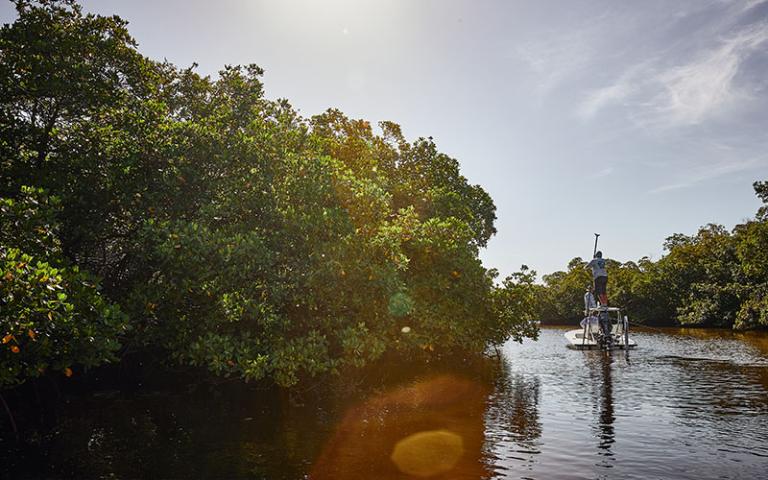
Widening our lens, here are three prime mangrove fishing spots on Florida’s Paradise Coast:
• Dollar Bay — Just a few miles south of Naples, this is a sprawling area of shallow shoals and winding mangroves. Enjoy true backcountry fishing close to town.
• Rookery Bay — Eight miles south of Naples, this is a 110,000-acre National Estuarine Reserve that is rife with mangroves. Not to mention fish.
• Ten Thousand Islands — The gold standard. This pristine marvel is considered one of the best fishing grounds in the country. It’s a 35,000-acre chain of small islands and mangrove islets. Its waters are a prime habitat for fish, without the disruption of human traffic. And here’s a bonus: Fishing or not, Ten Thousand Islands is a stunningly beautiful, almost magical place.
That’s just a primer on mangrove fishing on Florida’s Paradise Coast. You’re sure to enjoy your expedition — guide or no guide, catch or no catch (although experienced anglers and those using guides almost certainly will).
If you’re using a catch-and-release approach, you can hunt and reel in big, hard-fighting sportfish year-round on Florida’s Paradise Coast. Have your camera ready.
If you’re planning on keeping fish, be mindful of the many regulations the state of Florida has in place to make sure the state maintains its fertile fishing grounds. Let’s use snook as an example: The season runs September through November and March through April. Anglers can keep one per day within the slot limit — not less than 28 inches and not more than 33 inches.
Most sportfish species have rules regarding keepers. Click here for detailed regulations from the Florida Fish and Wildlife Conservation Commission.
And as a reminder, Florida visitors are required to have a fishing license, with some small exceptions. Click here for details.
And finally, here are some local stores where you can buy gear and pick up some of the finer points of mangrove fishing from helpful personnel.
Naples Outfitters, Marco Island Bait & Tackle, Sportsmans Warehouse, Captain Bill’s Bait & Tackle, Mangrove Outfitters Fly Shop, West Marine (Marco Island), West Marine (Naples), Everglades Fishing Co.
Explore More of Paradise Coast
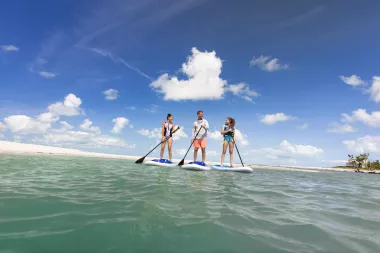
Guide to Family Gatherings in Naples, Marco Island and the Everglades

Find Your Beach in Naples and Marco Island

Explore Natural Beauty at Keeywadin Island
